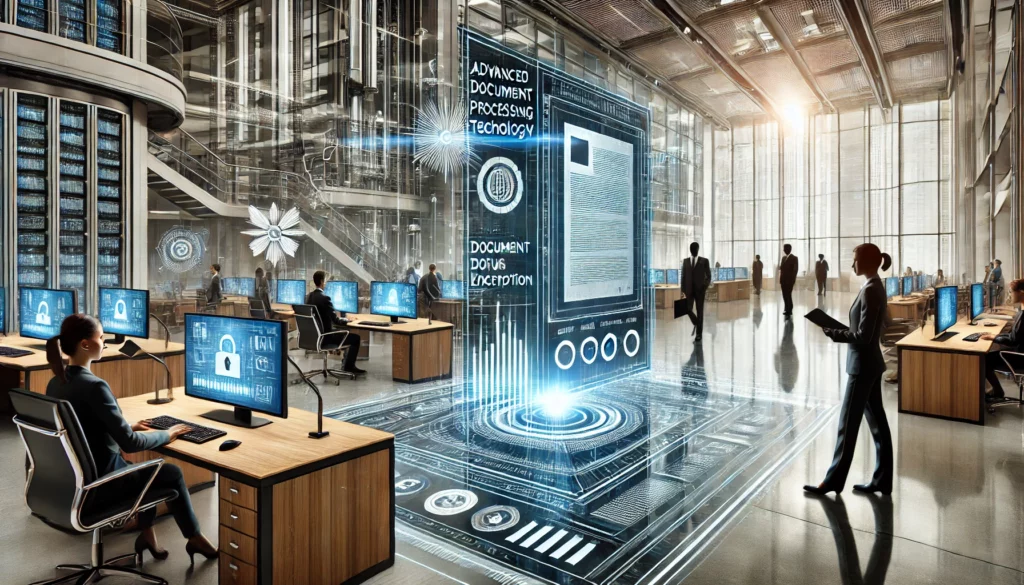Smart Document Capture Technology: A Complete Guide to Automated Document Processing in 2025

In today’s digital transformation era, organizations face unprecedented pressure to streamline operations and improve efficiency. While document automation has been around for decades, smart document capture technology represents a quantum leap forward in how businesses process information. This advanced technology transforms traditional digital document processing into an intelligent, automated system that can revolutionize your business operations.
What Is Smart Document Capture Technology?
Smart document capture technology combines artificial intelligence (AI), optical character recognition (OCR), and machine learning to process, classify, and extract data from documents automatically. According to Gartner’s latest research, intelligent document processing is becoming a critical component of digital transformation strategies. This innovation is particularly valuable for organizations facing complex document management challenges.
The Evolution of Document Processing
The journey from manual document handling to smart capture technology has been transformative. Traditional methods required substantial human intervention, leading to delays, errors, and increased operational costs. Modern smart capture systems have revolutionized this process by introducing automated intelligence to handle complex documents with minimal human oversight.
The 6 Essential Steps of Smart Document Capture Technology
1. Document Collection and Input
Modern capture solutions support automated document collection through multiple channels. This omnichannel approach ensures maximum flexibility and efficiency:
- High-resolution scanners for legacy paper documents
- Mobile device cameras for remote capture
- Email attachments for digital submissions
- Cloud storage platforms for seamless integration
- Digital faxes for traditional business communications
- Web portals for direct customer uploads
2. Image Processing and Enhancement
The system employs sophisticated algorithms to optimize document quality and ensure maximum data extraction accuracy:
- Resolution enhancement for clearer text recognition
- Skew correction to align documents properly
- Background noise removal for cleaner images
- Colour optimization for better contrast
- Digital reconstruction of damaged sections
- Format standardization across various document types
3. Intelligent Classification
Leveraging advanced AI algorithms, the software performs sophisticated document analysis:
- Automatic document type identification
- Pattern recognition from minimal samples
- Dynamic rule application based on document type
- Content categorization for efficient routing
- Metadata extraction for improved searchability
- Version control and document tracking
4. Automated Data Extraction
The OCR-powered extraction process has evolved significantly, offering:
- Advanced text recognition capabilities
- Handwriting interpretation
- Structured data mapping
- Relationship maintenance between data points
- Validation against existing databases
- Multi-language support for global operations
5. Validation and Quality Control
Modern systems incorporate robust validation mechanisms:
- Real-time error detection and correction
- Format verification against templates
- Data consistency cross-checking
- Automated compliance checking
- Exception handling workflows
- Audit trail creation for accountability
6. Export and Distribution
The final stage offers flexible output options:
- Integration with enterprise systems
- Secure cloud storage solutions
- Automated workflow routing
- Intelligent naming conventions
- Version control management
- Compliance-ready archiving
Benefits for Business Operations
Implementing smart document capture technology offers transformative advantages, particularly in automating repetitive tasks. A recent McKinsey Global Institute report indicates that organizations can reduce costs by up to 60% through intelligent document processing. Key benefits include:
Efficiency Improvements
- Reduced processing time by up to 90%
- Decreased manual data entry requirements
- Streamlined workflow automation
- Improved resource allocation
- Enhanced productivity metrics
- Faster document retrieval
Cost Reduction
- Lower operational expenses
- Reduced storage costs
- Minimized error correction expenses
- Decreased labor requirements
- Improved resource utilization
- Better scalability options
Enhanced Security and Compliance
The technology is crucial for ensuring document security and mitigating financial risks. The International Association for Intelligent Information Management (AIIM) emphasizes these security features:
- Advanced encryption protocols
- Automated compliance checking
- Comprehensive audit trails
- Secure access controls
- Data loss prevention
- Regular security updates
Integration with Existing Systems
Modern document capture solutions integrate seamlessly with various business systems. According to Forrester’s Digital Process Automation Survey, organizations that integrate intelligent document processing with existing systems see a 40% improvement in processing speed. Whether focusing on legal document automation or digital client onboarding, these integrations enhance workflow efficiency across:
- Enterprise Resource Planning (ERP) systems
- Customer Relationship Management (CRM) platforms
- Content Management Systems (CMS)
- Human Resources Information Systems (HRIS)
- Financial Management Software
- Supply Chain Management Solutions
Industry Trends and Future Outlook
The IDC’s Digital Transformation Market Forecast predicts significant intelligent document processing adoption growth through 2025. The MIT Technology Review highlights how emerging AI technologies are revolutionizing document processing capabilities, particularly in:
- Natural language processing
- Advanced pattern recognition
- Automated decision-making
- Real-time data extraction
- Cognitive document analysis
Getting Started with Document Automation
Ready to transform your document processing? Learn how to start with document automation software and explore our comprehensive guide to document automation. The World Economic Forum’s Digital Transformation Initiative recommends these implementation steps:
- Careful needs assessment
- Clear implementation strategy
- Comprehensive staff training
- Regular performance monitoring
- Continuous process optimization
- Ongoing system updates
Take Action Today
Don’t let manual document processing hold your business back. Smart document capture technology offers a proven path to increased efficiency and accuracy in document handling. Contact our team to learn how you can implement this technology in your organization and stay ahead in today’s competitive business environment.